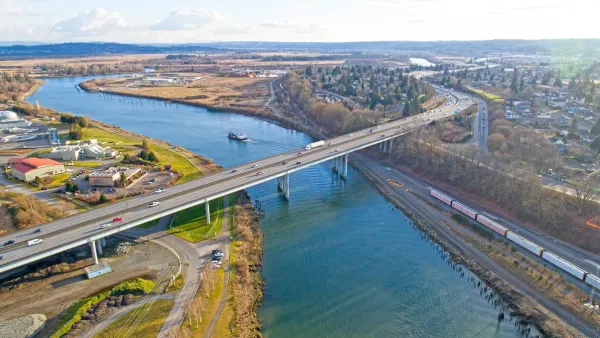A voluntary program of incentives for land owners along the two rivers in Oregon, the Mckenzie River east of Eugene and the Rogue River near Medford, provides incentives for maintaining natural conditions along the river bed.
Devan Schwartz reports on a pair of programs meant to deliver improvements in water quality along two rivers in Oregon.
The first example is the Voluntary Incentives Program, led by the Eugene Water & Electric Board (EWEB). Under the pilot project landowners along the McKenzie River, “would be paid for EWEB to have access to a small swath of land near the river. That swath would then managed for the landowners to improve or maintain the habitat.”
The Medford program, launched in 2012, is called a thermal trading system, arising out of a need for alternatives for expensive proposals to cool the river for salmon habitat.
“The river was at risk of becoming too warm for salmon and falling short of federal clean-water standards. Medford considered installing two chillers to cool the water. That would have cost about $15 million.
Instead, Medford launched a program in 2012 that pays between $100 and $300 per acre for easements from landowners to plant trees on their property. The $8 million cost for the program is just more than half that of the chillers.”
Not everyone agrees about how effective voluntary programs like these are, and some have called for more comprehensive programs of stream protection.
FULL STORY: Improving River Health With Natural Infrastructure And Incentives

National Parks Layoffs Will Cause Communities to Lose Billions
Thousands of essential park workers were laid off this week, just before the busy spring break season.

Retro-silient?: America’s First “Eco-burb,” The Woodlands Turns 50
A master-planned community north of Houston offers lessons on green infrastructure and resilient design, but falls short of its founder’s lofty affordability and walkability goals.

Delivering for America Plan Will Downgrade Mail Service in at Least 49.5 Percent of Zip Codes
Republican and Democrat lawmakers criticize the plan for its disproportionate negative impact on rural communities.

Test News Post 1
This is a summary

Test News Headline 46
Test for the image on the front page.

Balancing Bombs and Butterflies: How the National Guard Protects a Rare Species
The National Guard at Fort Indiantown Gap uses GIS technology and land management strategies to balance military training with conservation efforts, ensuring the survival of the rare eastern regal fritillary butterfly.
Urban Design for Planners 1: Software Tools
This six-course series explores essential urban design concepts using open source software and equips planners with the tools they need to participate fully in the urban design process.
Planning for Universal Design
Learn the tools for implementing Universal Design in planning regulations.
EMC Planning Group, Inc.
Planetizen
Planetizen
Mpact (formerly Rail~Volution)
Great Falls Development Authority, Inc.
HUDs Office of Policy Development and Research
NYU Wagner Graduate School of Public Service





























